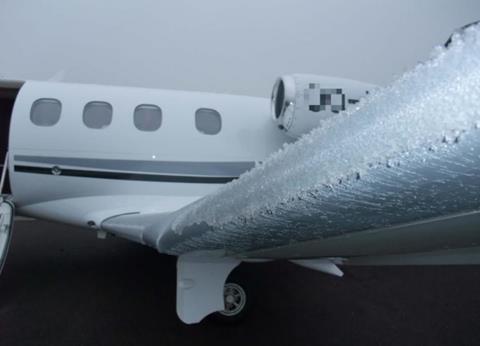Brazilian regulators have stressed that Embraer Phenom 100 pilots must not de-activate ice-protection systems to avoid an aircraft performance penalty, and ensure correct procedures are followed to avoid undetected ice formation.
Civil aviation agency ANAC has issued the recommendations in a 12 May special airworthiness bulletin, after investigations into three icing accidents involving the type – at Berlin Schoenefeld in February 2013, Gaithersburg in December 2014, and Paris Le Bourget in February 2021.
In all three cases the crews conducted an approach after selecting a landing speed for non-icing conditions, despite the presence of ice threats and the risk of stalling.

ANAC says ice-protection systems on the Phenom 100 must, according to the flight manual, always be activated in low temperatures and visible moisture.
“Ice-protection systems may be deactivated only after leaving ice conditions and if the pilot is certain that there is no ice formation in any part of the airplane,” it adds.
Approach and landing speeds must be consistent with the aircraft configuration with ice-protection system activated, and only reset once the pilot is sure the aircraft is free of ice.

“Ice-protection systems must not be turned off to avoid a performance penalty,” it adds.
“Non-adherence to the procedures with the intent to avoid the need for deviations to alternative airports jeopardises airplane operation safety as may result in a stall without alert.”
Phenom 100s protect against ice with a thermal anti-ice system for the engine intakes, an electrical heating system for the windshield and probe, and pneumatic de-icing boots for the wing and horizontal stabiliser.


























